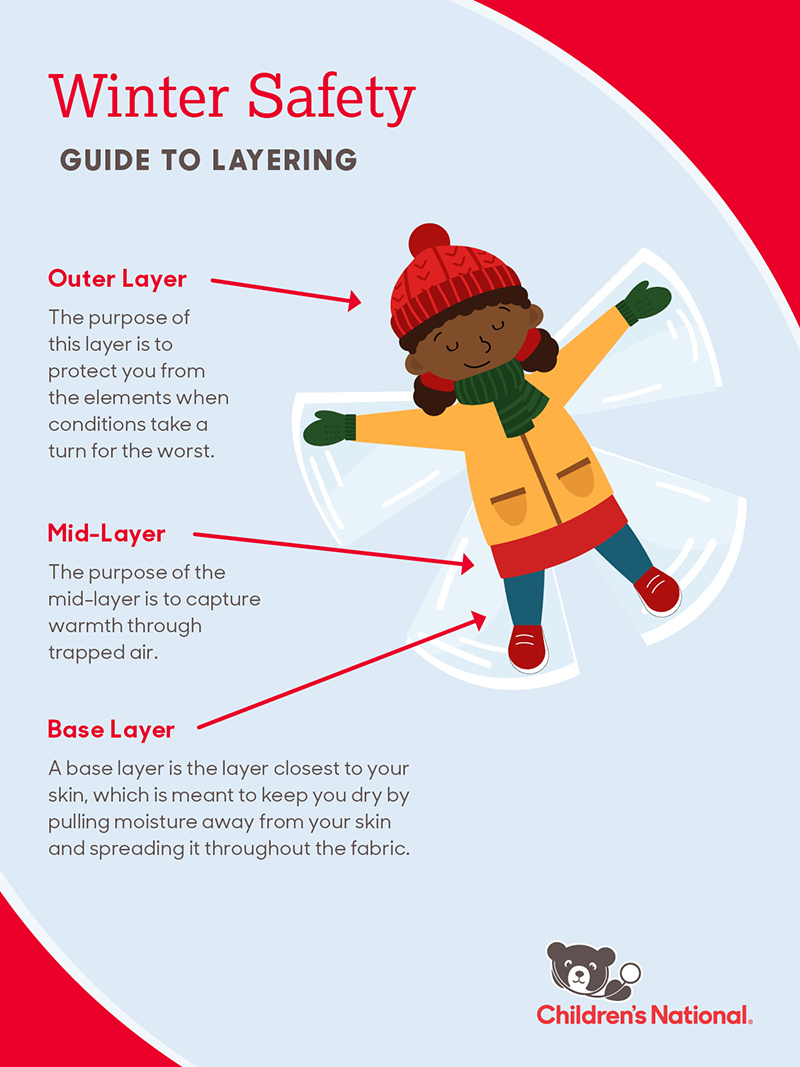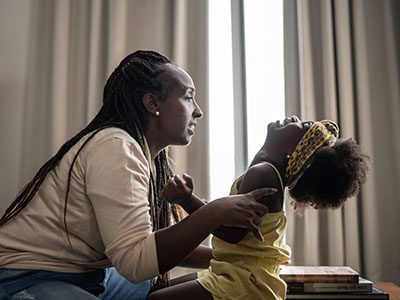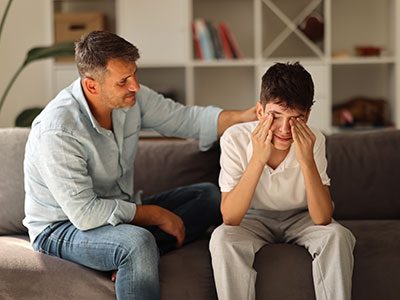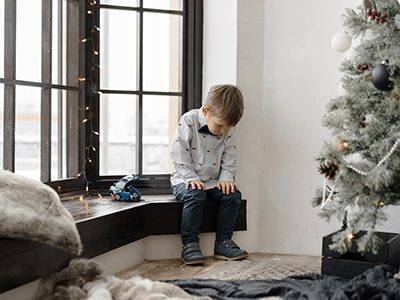Winter is here, and it is so vital for parents to take the necessary measures to keep their kids safe and warm. Yael Smiley, MD, a pediatrician and medical director of the Healthy Generations Program at Children’s National Hospital, answers common questions for parents with young children about dressing for colder weather.
What are some common misconceptions about the cold that people often get wrong?
People tend to think that now that it’s winter, you must hide the kids indoors, but that couldn’t be further from the case. If adequately dressed, kids can and should continue playing outside. Time outdoors and being active is a benefit to a child’s health, regardless of the season. Scientifically, sunshine has a lot of benefits for our bodies, including fighting off feelings of depression, improving sleep and strengthening our immune system. Children can still play outdoors as long as they have the proper safety gear and come inside occasionally to warm up.
How does the body retain warmth?
We use our skin to warm ourselves up and cool ourselves down. It is necessary to cover as much skin as possible and insulate the body. Because of their size to skin ratio (body surface area), young children are prone to losing heat quicker than adults. That is why layers are so essential to keep them insulated. As a rule of thumb, a child should wear one more layer than an adult, especially babies and nonverbal children. The type of fabric matters less than its surface area; this means long sleeves, sweaters, gloves, coats and scarves. While a winter coat is preferable if one is available, layering summer/fall clothes can be used to maintain warmth.
What are the best shoes to wear in the winter/snow?
Insulated and waterproof shoes are ideal for this type of weather. While these are great for warmth, the waterproof feature is essential to keep inner layers dry in wet conditions. For example, if socks get wet and a child continues to wear them, this could be dangerous and lead to hypothermia or frostbite.
What are the signs of hypothermia/frostbite? What warning signs will your body give if it gets too cold?
Hypothermia (abnormally low body temperature) and frostbite are both dangerous conditions that can happen when a person is exposed to extremely cold temperatures. When this happens, the body loses heat faster than it can be produced. Prolonged exposure to cold will eventually use up the body’s stored energy, resulting in hypothermia. A body temperature that is too low affects the brain, making the victim unable to think clearly or move well. This makes hypothermia particularly dangerous because a person may not know it is happening and won’t be able to react. In children and infants, symptoms include bright red, cold skin or unusually low energy. Hypothermia is more severe and widespread in your body than frostbite, which affects specific parts of your exposed skin.
Frostbite is a common condition where the skin freezes during exposure to cold weather or water. Frostbite symptoms can include numbness, swelling, blisters and blackened skin.
While frostbite can be handled by warming the extremities as soon as possible and contacting a pediatrician, hypothermia is a medical emergency and requires immediate medical attention. Take the child’s temperature if you notice any of the above signs. If their temperature is below 95°F, get medical attention immediately!
Ways to help someone warm up, even while awaiting medical aid, include:
- Get the person into a warm room or shelter.
- Remove any wet clothing the person is wearing.
- Warm the center of the person’s body with blankets. You can also use skin-to-skin contact under loose, dry layers of blankets, clothing, towels or sheets.
- Warm drinks can help increase body temperature, but do not give alcoholic drinks. Do not try to give beverages to an unconscious person.
- After body temperature has increased, keep the person dry and wrap their body, including their head and neck, in a warm blanket.
- Get the person proper medical attention as soon as possible.
Is it okay for my toddler/baby to wear their heavy jacket in the car?
Puffy winter coats and snowsuits are great for keeping children and infants warm; however, they can be unsafe when children are strapped into a car seat. In the event of a car crash, fluffy padding immediately flattens out from the force, leaving extra space under the harness. Because the puff is now deflated, the child is not fully secured to the car seat and may slip out of their seat. This is where layers come in and allow you to remove their outer layer before strapping children into their car seats while maintaining insulation.

Download our Guide to Layering here.
 https://riseandshine.childrensnational.org/wp-content/uploads/2025/05/child-having-tantrum-feature.jpg
300
400
webteam
https://riseandshine.childrensnational.org/wp-content/uploads/2017/11/childrens_riseandshine_logo.jpg
webteam2025-05-07 15:54:412025-05-07 16:19:29Helping autistic children manage big feelings
https://riseandshine.childrensnational.org/wp-content/uploads/2025/05/child-having-tantrum-feature.jpg
300
400
webteam
https://riseandshine.childrensnational.org/wp-content/uploads/2017/11/childrens_riseandshine_logo.jpg
webteam2025-05-07 15:54:412025-05-07 16:19:29Helping autistic children manage big feelings















Leave a Comment
Want to join the discussion?Feel free to contribute!